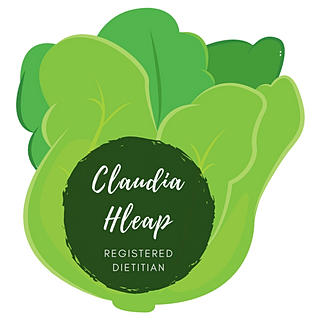Understanding Polycystic Ovarian Syndrome (PCOS)
- Admin
- Feb 18
- 3 min read
Updated: Sep 9
Keep reading to learn more about PCOS: what it is, treatment options and recommended lifestyle modifications, and common supplements.
What is Polycystic Ovarian Syndrome (PCOS)?
"Polycystic ovarian syndrome (PCOS) is the most common endocrine pathology in females of reproductive age worldwide" (1) PCOS can develop during a woman’s reproductive years and affects approximately 5-26% if women worldwide. This variability depends on diagnostic criteria. (2)
PCOS results from a hormone imbalance, causing the ovaries to overproduce testosterone.
What are common symptoms of PCOS?
Women with PCOS can experience:
Irregular periods
High testosterone levels
Acne
Hair growth on face
Weight gain
Specifically in the abdominal region
Difficulty losing weight
Increased baseline inflammation (as measured by elevated CRP levels). (3)
What does PCOS treatment look like?
Medication to manage blood sugars and block androgen production (hormonal birth control, Metformin, etc.)
GLP-1s (one of the newer treatments, but more studies are needed)
Diet and lifestyle changes
One study titled, "The latest reports and treatment methods on polycystic ovary syndrome" recommended "Only if dietary intervention does not bring results, the doctor considers pharmacotherapy" (4)
Other conditions associated with PCOS:
Lifestyle modifications for PCOS:
Women should prioritize protein, beans, non-starchy veggies, whole grains, fruits, and healthy fats.
Weight management through lifestyle changes like diet modification and incorporation of exercise can treat symptoms of PCOS. (5)
It has been shown that modest weight loss, as little as 5%, can improve symptoms of PCOS. Both exercise and a healthy diet can help to manage blood sugar levels. (5)
The diet recommendations for PCOS are very similar to those recommended for someone with diabetes. There is no specific “diet” for PCOS.
Work with a Registered Dietitian and Certified Diabetes Educator to learn what a balanced diet looks like for you!
Should I take supplements if I have PCOS?
There are a number of supplements available to treat symptoms of PCOS, like:
Berberine, Curcumin, Acetylcysteine, Inositol, CoQ10, Magnesium
Although there is promising research, more evidence is needed to make conclusive remarks about their benefits.
The FDA doesn't regulate dietary supplements, so it’s important to read labels to understand exactly what you are taking. Ensure a supplement is third-party tested to confirm the supplement contains what it claims to have in accurate doses.
Dietitian Takeaway for PCOS:
Work with a Registered Dietitian and Certified Diabetes Educator to learn what a balanced diet looks like for you! Each person needs different recommendations, depending on their weight, age, activity levels, gastrointestinal health, and bloodwork results.
Overall, the objective with PCOS is blood sugar and weight management. There are no specific foods that need to be excluded from the diet.

Resources
1. Shukla A, Rasquin LI, Anastasopoulou C. Polycystic Ovarian Syndrome. [Updated 2025 Jul 7]. In: StatPearls [Internet]. Treasure Island (FL): StatPearls Publishing; 2025 Jan-. Available from: https://www.ncbi.nlm.nih.gov/books/NBK459251/
2. Bozdag G, Mumusoglu S, Zengin D, Karabulut E, Yildiz BO. The prevalence and phenotypic features of polycystic ovary syndrome: a systematic review and meta-analysis. Hum Reprod. 2016 Dec;31(12):2841-2855. https://pubmed.ncbi.nlm.nih.gov/27664216/
3. Kelly CC, Lyall H, Petrie JR, Gould GW, Connell JM, Sattar N. Low grade chronic inflammation in women with polycystic ovarian syndrome. J Clin Endocrinol Metab. 2001 Jun;86(6):2453-5. doi: 10.1210/jcem.86.6.7580. PMID: 11397838. https://pubmed.ncbi.nlm.nih.gov/11397838/
4. Stańczak NA, Grywalska E, Dudzińska E. The latest reports and treatment methods on polycystic ovary syndrome. Ann Med. 2024 Dec;56(1):2357737. doi: 10.1080/07853890.2024.2357737. Epub 2024 Jul 4. PMID: 38965663; PMCID: PMC11229724. https://pubmed.ncbi.nlm.nih.gov/38965663/
5. Crosignani PG, Colombo M, Vegetti W, Somigliana E, Gessati A, Ragni G. Overweight and obese anovulatory patients with polycystic ovaries: parallel improvements in anthropometric indices, ovarian physiology and fertility rate induced by diet. Hum Reprod. 2003 Sep;18(9):1928-32. https://pubmed.ncbi.nlm.nih.gov/12923151/






Comments